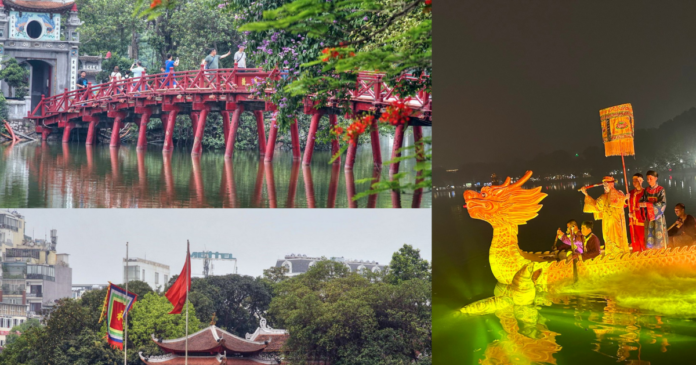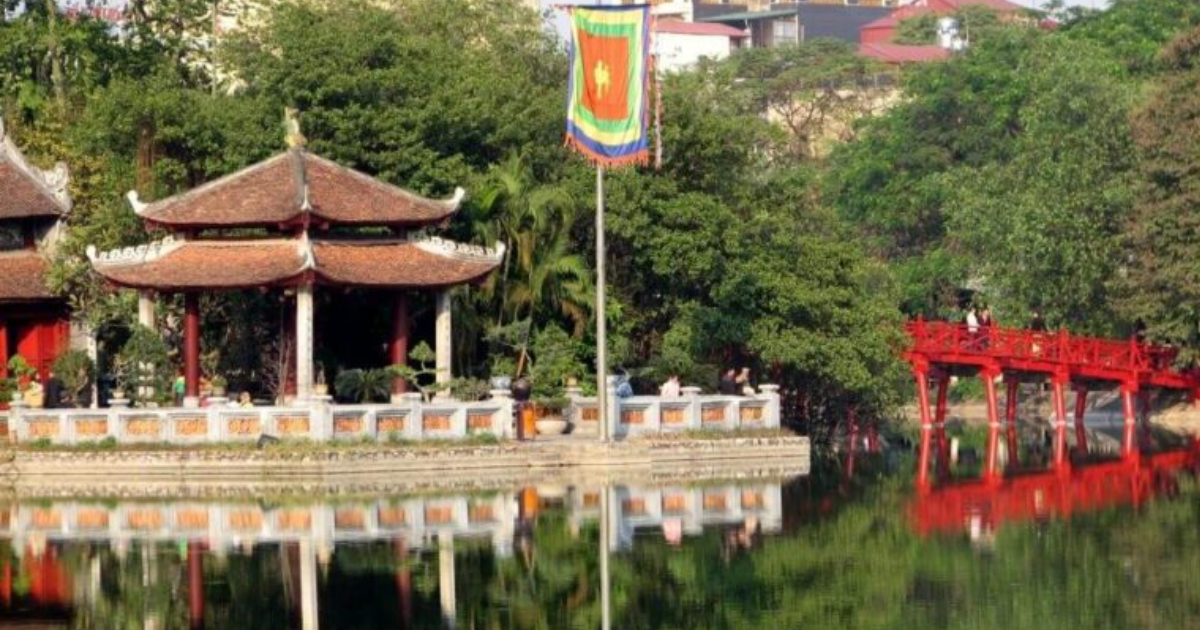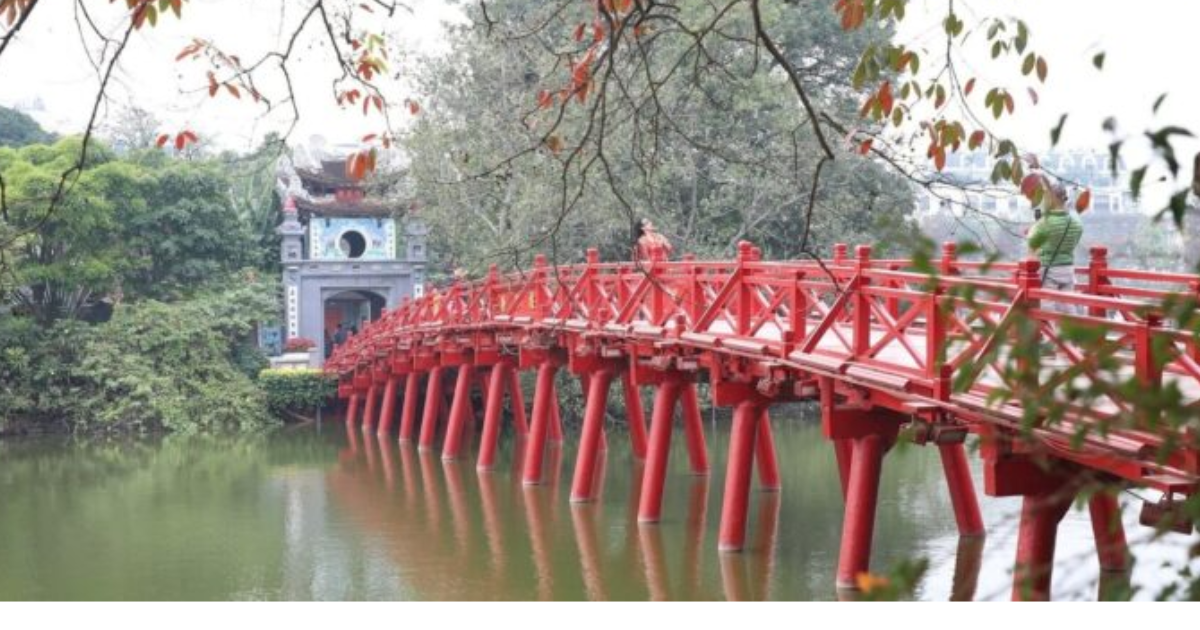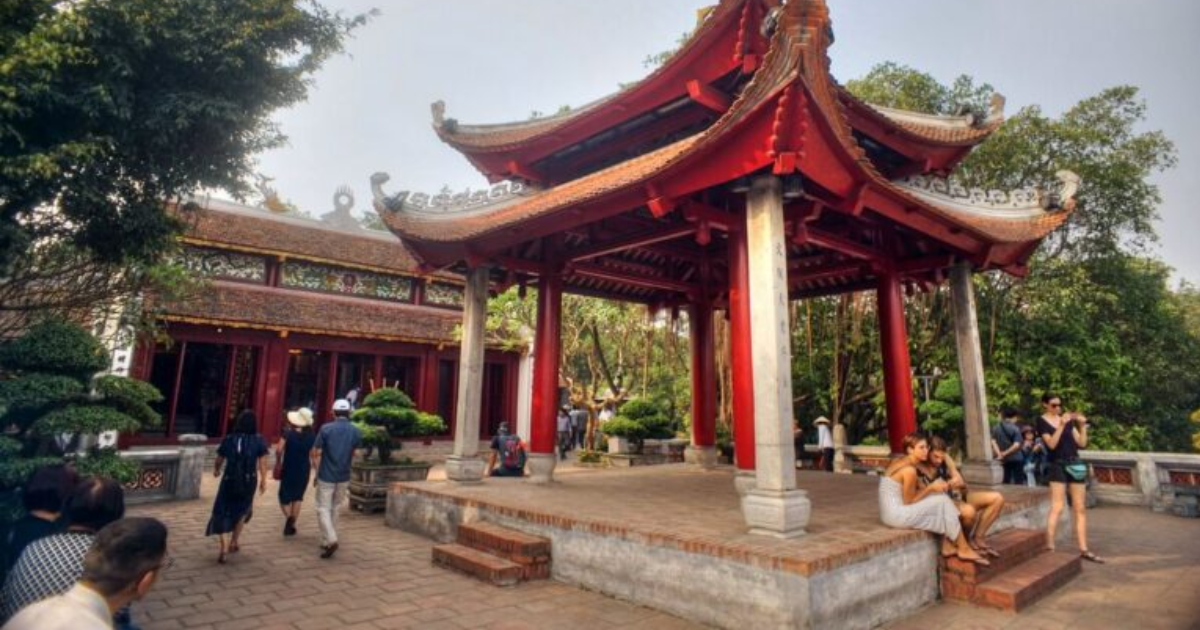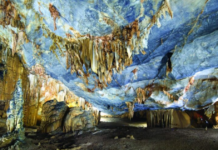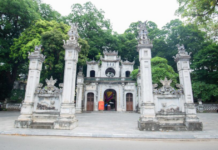2. Location and how to get to Ngoc Son Temple
Nestled on a peaceful mound, known as Ngoc Son Island, Ngoc Son Temple stands out as a bright spot in the middle of the poetic Hoan Kiem Lake. The temple is located at the very heart of Hanoi’s capital. To reach the temple, you will pass through the large gate located on Dinh Tien Hoang Street, a busy road in the Hoan Kiem district. Due to its central location, it is easy to access the temple by various means:
Motorbike: The easiest way to get to the temple is by motorbike. If you enjoy observing the lively hustle and bustle of Hanoi, this mode of transportation is ideal.
Car: Traveling by car is also a great option for your trip to Ngoc Son Temple. There are many different routes you can take to reach the temple.
Bus: If you’re looking to save on transportation costs, the bus is the best choice. Many bus routes go to Ngoc Son Temple, including: Route 14 from Co Nhue, Route 31 from Hanoi University of Science and Technology, and Route 08 from Long Bien Bus Station.
>> Explore Hoang Van Thu Park: A paradise for relaxation in the heart of Saigon
3. Notable landmarks at Ngoc Son Temple
3.1. Pen Tower and Inkstone Pavilion: Symbols of intellect
Upon arriving at the main gate of Ngoc Son Temple, the first striking feature you can’t miss is the Pen Tower. This structure, which is over 150 years old, was built in 1865 under the guidance of renowned scholar Nguyen Van Sieu. The Pen Tower stands tall like a giant calligraphy brush, symbolizing the academic spirit of the Vietnamese people. The tower is situated on a natural stone mound called Doc Ton, which signifies a solitary and proud mountain, symbolizing the resilience and determination of human intellect. On the body of the tower, you’ll see the Chinese characters “Ta Thanh Thien,” which translates to “Write to the Sky.” These three brief words evoke a powerful sense of the desire to conquer knowledge, as if each stroke of ink merges with the vast expanse of the sky.
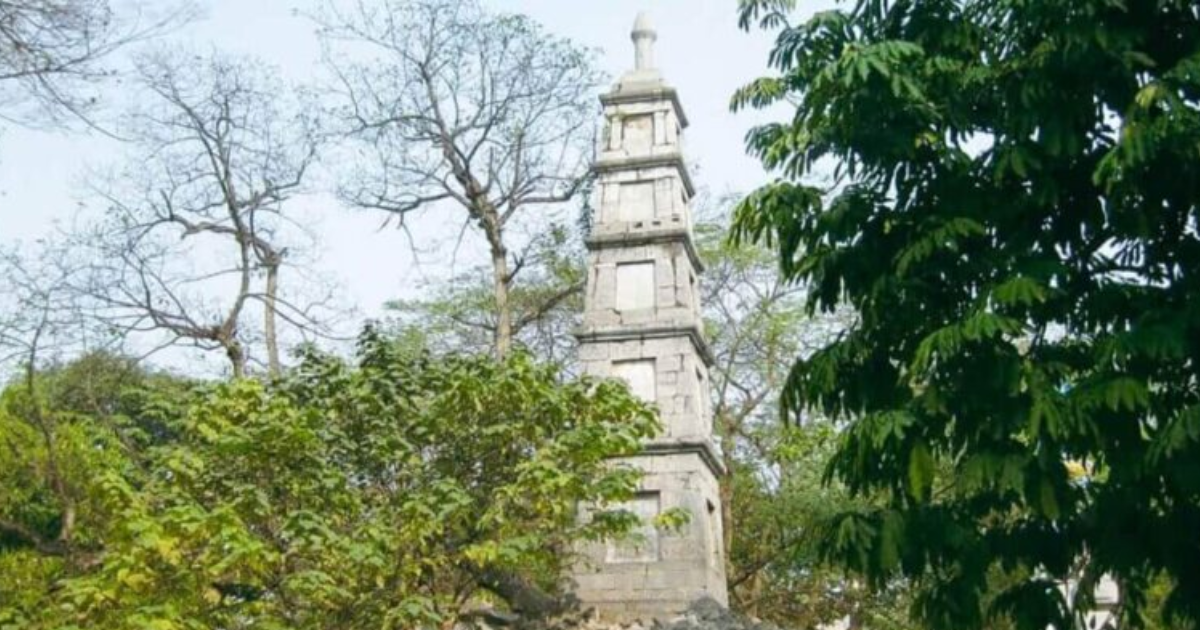
The Inkstone Pavilion is located right in front of the main gate, featuring a stone inkstone shaped like half of a sliced peach placed on the backs of three stone frogs. The Inkstone Pavilion is not only a symbol of the sharpening of knowledge but also a remarkable cultural and artistic landmark. Engraved on the Inkstone Pavilion is a 64-character inscription, celebrating the meaning of building and the desire for learning and self-improvement in ancient times. On either side of the pavilion are two plaques of a Dragon and a Tiger, symbolizing those who have passed exams, serving as a national pride. It is said that just standing in this space, feeling the breeze of the lake, the shadow of the tower, along with two profound couplets, will bring you a deep sense of awe:
“Eight islands, the silver lake water fills
Soaring to the sky, the pen’s shape like a high stone peak.”
>> An Dong Market: A shopping paradise in Ho Chi Minh City.


